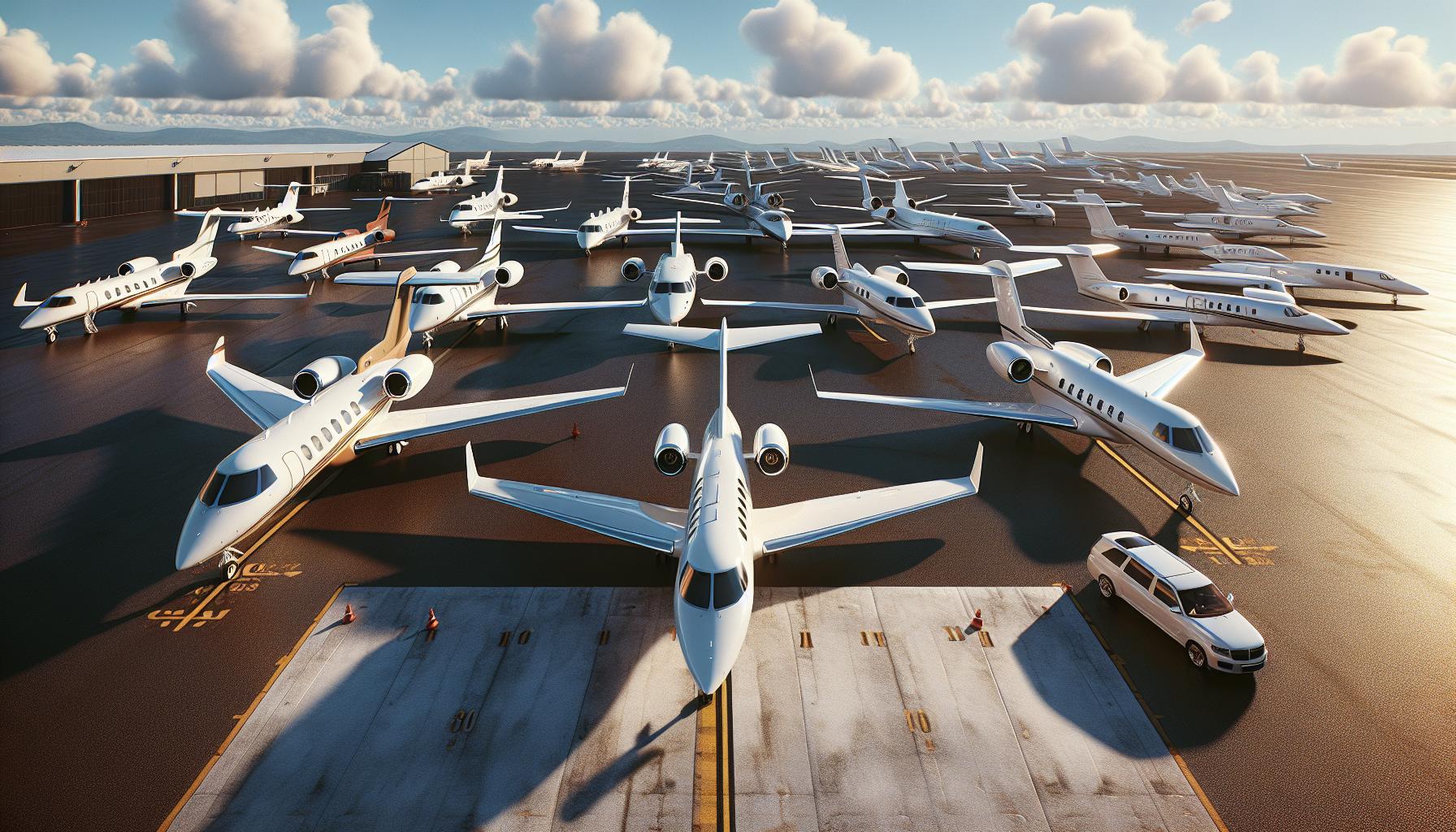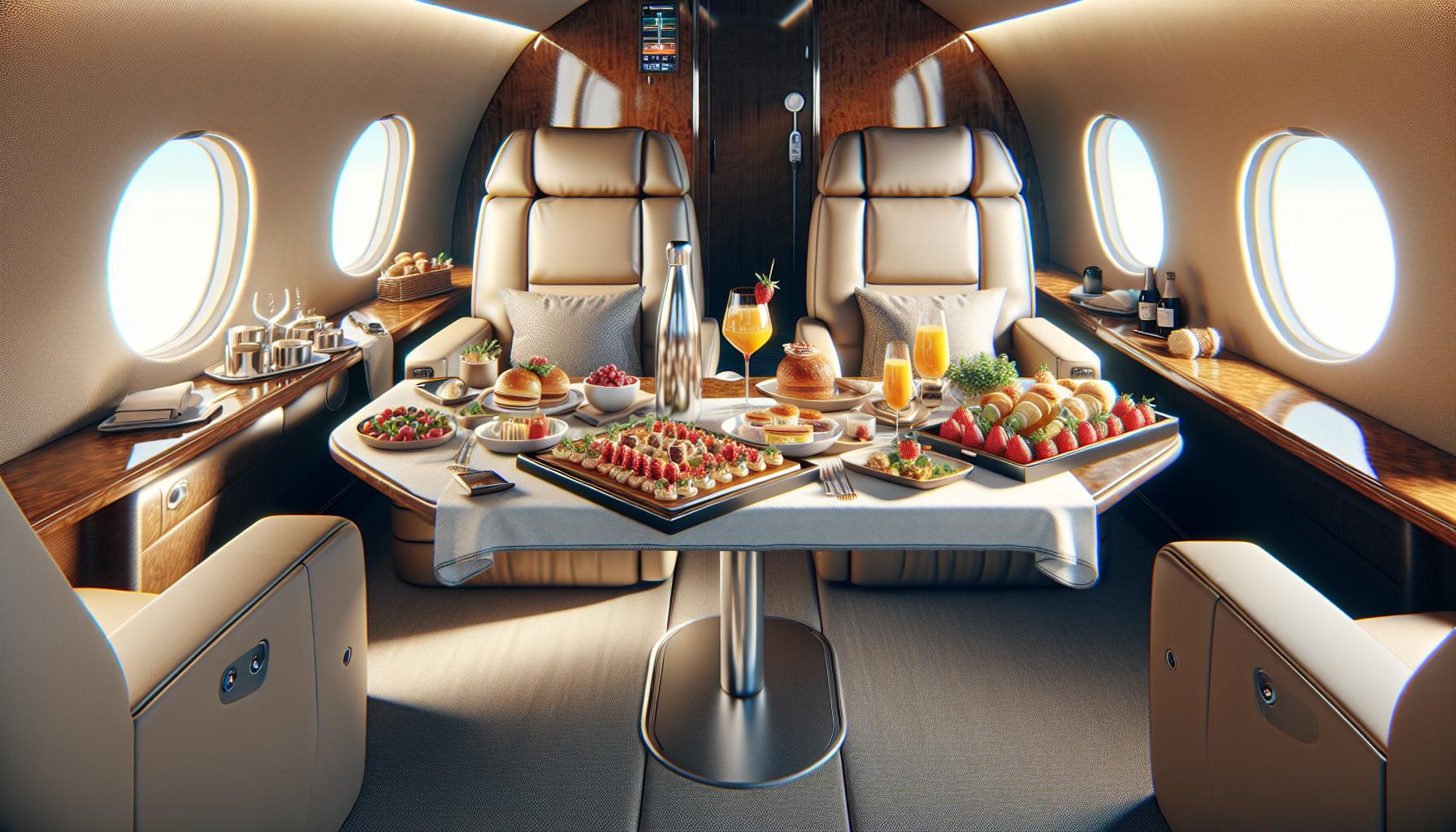
Ever wondered what it costs to live the high life, soaring above the clouds in your own private jet? I’ve been in the private jet biz, and let me tell you, it’s not just the rich and famous who can make it happen. The price per hour might just surprise you.
In this well-researched article, I’ll break down the costs of private jet travel. From fuel to pilots, every dollar counts. Stick with me, and I’ll give you the insider scoop on how to fly private without breaking the bank.
Factors that Affect the Cost of a Private Jet per Hour
When I’m looking to charter a private jet, it’s essential to understand that the cost isn’t a one-size-fits-all scenario. There are several factors that can heavily influence the hourly rate.
Aircraft Type and Size: Just like cars, smaller jets cost less than larger ones. A light jet will have a significantly lower hourly rate compared to a heavy or ultra-long-range jet that offers spacious cabins and extended range.
Age of Jet: Newer jets bleed edge technology and higher operating costs. I’ve seen this firsthand. Older models, although well-maintained, can be more affordable on an hourly basis.
Flight Distance: Shorter trips may have a higher hourly cost due to the operational efforts needed for takeoff and landing. Longer flights can lower the hourly rate as the jet spends more time cruising at optimal altitude, stretching out the costs.
Flight Duration: Minimum usage fees could kick in for flights under a certain timeframe. Even a 30-minute flight can incur costs associated with a minimum block of hours, often 2 hours.
Airport Fees and Location: Touching down in exclusive airports or locations with higher landing fees will up the hourly costs. Smaller airports might offer more competitive rates.
Here’s a brief breakdown:
| Factor | Impact on Cost |
|---|---|
| Aircraft Type and Size | Significant difference in rates |
| Age of Jet | Newer = higher costs |
| Flight Distance | Short trips = higher hourly rate |
| Flight Duration | Minimum usage fees may apply |
| Airport Fees and Location | Exclusive = higher costs |
Remember, fuel costs can also vary based on the price of oil and the efficiency of the aircraft. And don’t forget about pilot and crew salaries, as well as any additional services such as catering or ground transportation, all adding to the hourly expense.
Aircraft Type and Size

When I explore the cost of renting a private jet per hour, I must consider the type and size of the aircraft. This is a primary factor that significantly affects the expense. Typically, private jets are categorized into light, midsize, super-midsize, and large or heavy jets. It’s no surprise that as you go up in size, the cost follows.
Light jets are perfect for shorter trips or smaller groups. Their hourly rates are the most budget-friendly, offering a cozy space for around 6-8 passengers. Midsize jets offer a balanced mix of comfort and range, suitable for mid-range distances with a little more legroom and space to work or relax.
Moving up, the super-midsize jets provide more luxury and amenities. These are often selected for transcontinental flights due to their enhanced range and comfort for passengers, naturally, at a higher hourly rate. Finally, the large private jets are the pinnacle of private travel. With capacity to carry more passengers in absolute luxury and across international distances, the hourly cost is justifiably on the higher end.
I’ve looked into some average hourly rates to give you a clearer picture:
| Jet Category | Average Hourly Rate (USD) |
|---|---|
| Light Jet | $2,000 – $2,500 |
| Midsize Jet | $2,500 – $3,500 |
| Super-Midsize Jet | $3,500 – $4,500 |
| Large Jet | $5,000 – $8,000 |
Bear in mind, these are ballpark figures. Actual costs can vary depending on specific models and amenities within each category. Customizations and luxury features like high-speed WiFi, gourmet catering, or in-flight phone service can push the price up.
Moreover, the aircraft’s age also plays a role. A newer jet might cost more to rent per hour than an older model, but the trade-off could be the latest technology and safety features. It’s a balance between what’s essential for you, whether it’s a state-of-the-art entertainment system or perhaps, a bit more cost-effective older model that still offers a comfortable and safe experience.
Fuel Costs and Consumption

When I’m breaking down the hourly rates for a private jet, it’s crucial to factor in fuel costs. While they might fluctuate, fuel expenses typically represent one of the largest portions of the overall cost. Here’s an interesting bit—private jets consume an average of 200 to 300 gallons of fuel per hour. However, the exact figure depends on the jet’s size and type.
Let’s take a closer look. For light jets, popular among business travelers and small groups, the usage is on the lower end of the spectrum. Midsize to heavy jets, which provide more space and amenities, naturally use more fuel. The fuel cost is also heavily influenced by the price of jet fuel at the time of the flight.
I’ve noted that international market trends can cause jet fuel prices to swing significantly. As a point of reference, consider that at the start of 2022, the average price for jet fuel was around $2.25 per gallon. By mid-year, prices had surged past $3.00 in certain regions.
| Jet Type | Fuel Consumption (Gallons per Hour) |
|---|---|
| Light Jet | 200 – 300 |
| Midsize Jet | 300 – 400 |
| Heavy Jet | 400 – 500 |
When planning a trip, I always take into account the current fuel prices to get a good estimate of the cost. Remember, fuel consumption is directly tied to distance; longer flights will naturally incur higher fuel charges. These charges are then built into your chartered flight price, affecting the hourly rate you pay. It’s also worth noting that fuel efficiency is improving with newer jet models, which could reduce these costs in the future. But as of now, you’ll need to keep a close eye on the fuel market if you’re budgeting for a private flight.
Operational and Maintenance Expenses

When I’m calculating the cost of operating a private jet, I can’t overlook the operational and maintenance expenses, which are substantial. These expenses are recurring and can vary widely based on the aircraft’s usage and age. Let’s break down some of these costs.
For starters, regular maintenance is key to ensuring the safety and longevity of any jet. This encompasses everything from routine inspections to overhauls of critical systems. The costs here can ramp up quickly, especially if I’m dealing with an older model that may require more frequent check-ups and part replacements.
Pilots and crew also represent a significant chunk of the operational expenses. Their salaries, training, and certifications must be kept up to date. All of this requires a substantial investment. For instance, a professional, experienced pilot can command a hefty salary, which will impact hourly costs.
Moreover, insurance premiums for private jets are not to be underestimated. Given the value of the aircraft and the potential risks involved, insurance coverage is mandatory and can be quite pricey. It’s a recurring expense that safeguards my investment but certainly adds to the bottom line.
And let’s not forget about hangar fees. Secure storage for my aircraft isn’t just a luxury; it’s a necessity for protection from the elements and to maintain the jet’s condition. Whether I’m leasing space at an airport or own a private hangar, I’ll need to factor this in as well.
Operating a private jet also means dealing with a slew of administrative fees. From flight planning to regulatory compliance and paperwork, there are costs associated with keeping everything in order. The time and resources allocated to administration may seem minor compared to other expenses, but they add up.
Here’s a snapshot of average annual operational and maintenance costs for a mid-size jet:
| Expense Category | Estimated Annual Cost (USD) |
|---|---|
| Routine Maintenance | 500,000 |
| Crew Salaries | 250,000 |
| Insurance | 200,000 |
| Hangar Fees | 60,000 |
| Administrative Fees | 30,000 |
These numbers give you an idea of the financial commitment required beyond the initial purchase of a jet. They’re essential for safe operation and can’t be cut without compromising integrity and reliability. Keep in mind, larger or more luxurious jets will have proportionally higher operational and maintenance costs which will, in turn, increase the hourly rate.
Additional Costs to Consider

While we’ve explored the main factors that drive the cost of flying a private jet, it’s pivotal to consider the extra expenses that aren’t immediately obvious. In-flight catering can add a touch of luxury but also increases your bill significantly. Whether you’re craving gourmet meals or just want a selection of fine wines and cheeses, these indulgences come at a premium.
Then there’s ground transportation. If you’re looking for a seamless experience, limousine service from your doorstep to the aircraft, and then to your final destination can be arranged, but don’t forget to factor these costs into your budget. It’s the small details that can make a big difference.
If you’re flying internationally, there’s paperwork to handle. Customs and overflight permits may not sound pricey, but they can be, especially in certain parts of the world. Each country has its own set of regulations and fees, and navigating this can be costly and time-consuming if not managed well.
For those who are time-pressed, an expedited service can process these faster but at a cost, so weigh the benefits. Security services, both personal and for the aircraft, are another cost not to be overlooked. If you’re concerned about privacy or traveling to more volatile destinations, this cost is for peace of mind.
Lastly, let’s talk about the unexpected. Just like cars, private jets can encounter unforeseen issues that require immediate attention. Contingency funds are a must for any savvy traveler to cover any unplanned maintenance or repairs. It’s always better to be prepared than to be caught off-guard.
Understanding the full financial picture of private jet travel is essential for managing expenses and avoiding surprises. Remember to consider every potential cost to ensure your luxurious flight remains a stress-free experience.
Ways to Fly Private without Breaking the Bank

Flying on a private jet doesn’t always have to mean emptying your wallet. If you’re savvy about it, you can experience the luxury of private travel without the steep price tag. Jet sharing is a great start. It involves booking a seat on a private plane that’s heading in the direction you’re going, rather than chartering the whole aircraft. This way, you’re only paying for your seat, greatly reducing your spend.
Another budget-friendly option is to look for empty leg flights. These are trips that private jets have to make to return to their home base or travel to pick up passengers after dropping off others. They’re often available at a fraction of the cost because the plane would be flying empty otherwise. I’ve seen prices slashed by as much as 75%, making it a deal you don’t want to pass up.
Don’t overlook membership programs either. Some companies offer memberships that give you access to discounted rates and benefits, which can be especially valuable if you fly frequently. They work by offering you a lower “member” rate, cutting down the hourly costs significantly.
For those less frequent travelers, considering charter brokers can be beneficial. They’re like travel agents for private jet flights and often have access to deals you won’t find on your own. They have the expertise to navigate the marketplace and can sometimes snag you some serious savings.
Lastly, being flexible with your travel plans can pay off when looking to fly private on a budget. If you can adjust your schedule to fit when an aircraft is already heading in your desired direction, you could tap into considerably lower rates.
- Jet sharing
- Empty leg flights
- Membership programs
- Charter brokers
- Flexibility in travel plans
Keep in mind, flying privately is inherently more expensive than commercial travel, but with a little research and flexibility, the perks of privacy, convenience, and luxury can be within reach without breaking the bank.
Conclusion
Frequently Asked Questions
What factors influence the cost of flying on a private jet?
The cost of flying in a private jet is influenced by the jet’s type and size, its age, the distance and duration of the flight, as well as airport fees and the geographic location of the airport.
Are there additional expenses to consider when flying on a private jet?
Yes, additional expenses may include in-flight catering, ground transportation, international flight paperwork, security services, and contingency funds for unexpected issues.
How can I fly private without spending too much money?
To save money on private flights, consider jet sharing, searching for empty leg flights, joining membership programs, using charter brokers, and being flexible with your travel plans.
What are the benefits of flying on a private jet?
Flying on a private jet offers privacy, convenience, and luxury. It often allows passengers to reach destinations more quickly and efficiently, with the ability to work uninterrupted or relax in a comfortable setting.
Is it cheaper to fly on a private jet if I share it with others?
Yes, jet sharing can reduce the cost per person by splitting the expenses among a group, making it a more economical option than flying solo on a private jet.
